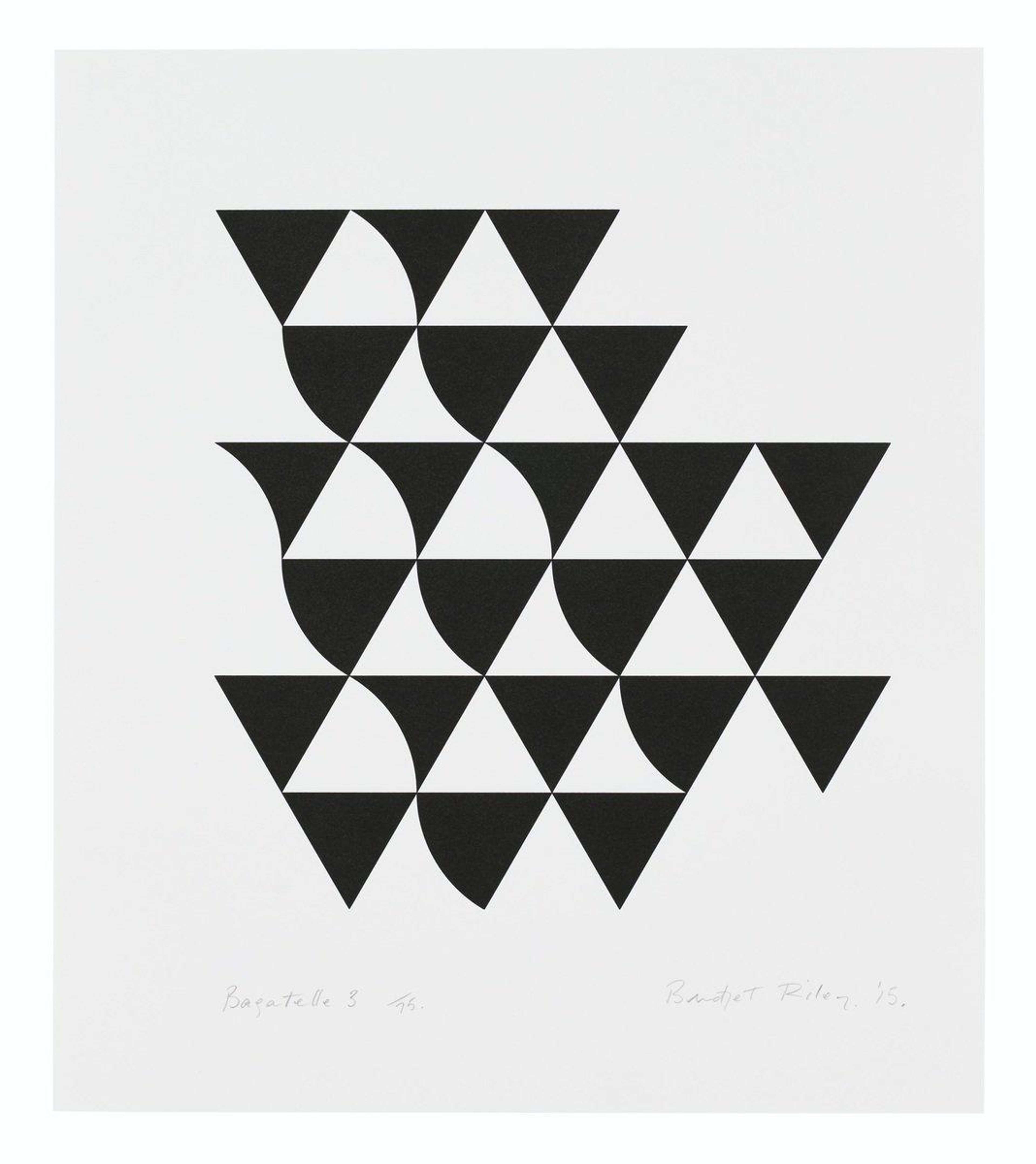
Bagatelle 3

Bagatelle 3
Signed Print
Bridget Riley
£6,500-£10,000
$13,000-$20,000 Value Indicator
$12,000-$18,000 Value Indicator
¥60,000-¥90,000 Value Indicator
€7,500-€11,500 Value Indicator
$70,000-$100,000 Value Indicator
¥1,350,000-¥2,080,000 Value Indicator
$8,500-$13,500 Value Indicator
There aren't enough data points on this work for a comprehensive result. Please speak to a specialist by making an enquiry.
67 x 59cm, Edition of 75, Screenprint
Auction Results

Track auction value trend
Meaning & Analysis
Bagatelle 3 is a signed screen print from 2015, released in a limited edition of 75. This print is a part of the Bagatelle series by the Op Art artist, Bridget Riley. Bagatelle 3 is exemplary of Riley’s non-representational approach to painting, in which colour, shape and form take precedence. Printed on wove paper Bagatelle 3, the last print in the Bagatelle series, like the other two, represents a configuration of triangles in monochrome.
This optically dazzling print references many concepts that underpinned Riley’s hugely successful art of the 1960s, initially propelling her to fame. Demonstrating Riley’s firm commitment to non-representational painting, the simple forms deconstruct as the viewer’s eye passes over them, placing the subjectivities inherent to the spectatorship of art at the fore. Indeed, the subjective experience of each viewer when regarding a painting was a fundamental step in the creative process, according to Riley. This series of prints is significant in Riley’s oeuvre, representing a final body of monochrome work before the artist began to integrate colour into her practice.